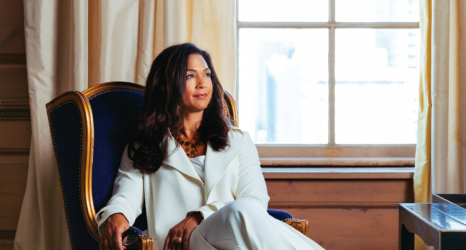Camille Brown shares what she has learned as director and choreographer of the powerful new Broadway revival of “for colored girls who have considered suicide / when the rainbow is enuf.”
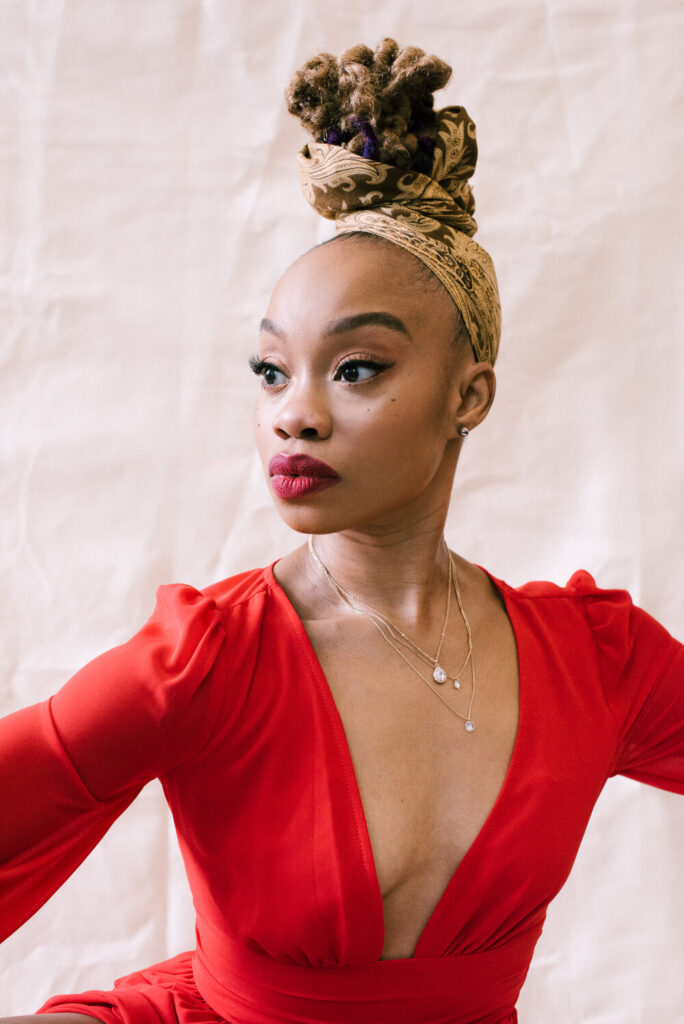
We often tell women’s stories with words or song, but Camille A. Brown has a distinctive way of bringing personal history alive—through dance and movement.
Brown’s choreography has won many awards and accolades. Her compelling style is currently on display in the new Broadway production of for colored girls who have considered suicide / when the rainbow is enuf, which recently received seven Tony nominations, including Brown’s two nominations for Best Choreography and Best Direction of a Play.
The groundbreaking play by Ntozake Shange premiered in 1976 (three years before Brown was born), and audiences were immediately riveted by this glimpse into Black women’s lived experience. The play mixes poetry, music and dance to tell the stories of seven Black women. Brown’s powerful reinterpretation of the iconic work makes the messages of joy, pain and struggle completely of the moment. I was delighted to talk to her about her great achievement—and what it means for women everywhere.
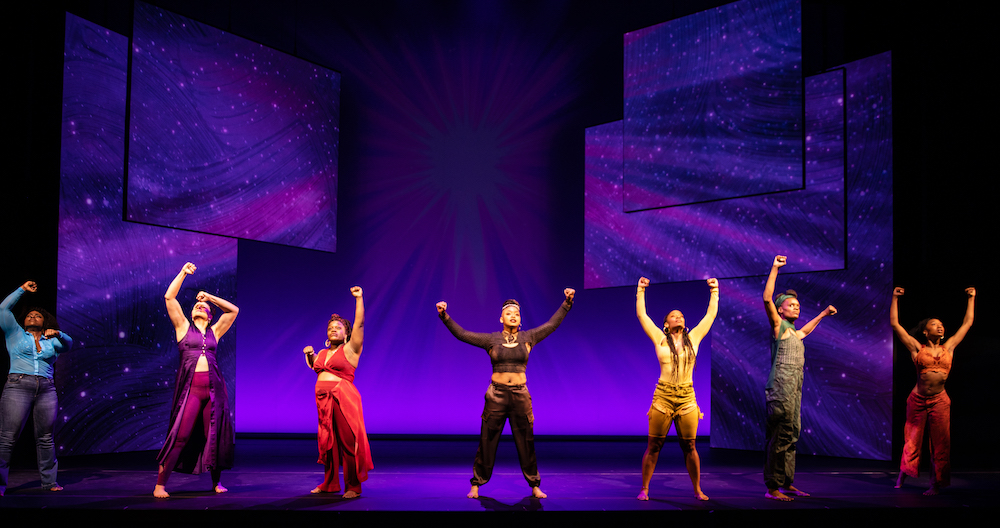
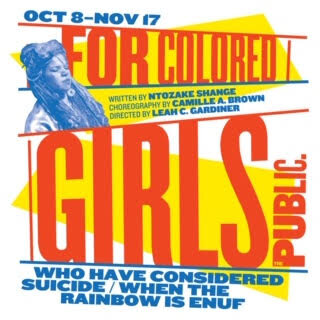
Janice Kaplan: Congratulations on this great show. What has it been like to take on such a revered work and try to make it meaningful for a new generation?
Camille Brown: It was really scary! This piece is beloved by Black women and has been done so many times, so how do you contribute to something so well known? I didn’t want to disappoint anyone. I finally had to get out of my own head and tell myself—trust your instincts and lean into what the piece is saying to you.
Kaplan: What part of it felt most important to you?
Brown: My mom always said to me, “Don’t let anyone take your stuff away.” I learned only a couple of years ago that it’s a line from one of the poems in the show, so I grew up with this in my life. It speaks to sisterhood. It speaks to the idea of persevering in the midst of situations where you feel you can’t move forward and knowing there is a tomorrow.
Your sisters have you, we can connect as a sisterhood and create safe spaces to share our most devastating stories alongside our most joyful stories too. It’s not one feeling—it’s love and pain and joy and sadness. People watch the play and tell me they’re crying one minute then laughing the next.
My mom always said to me, “Don’t let anyone take your stuff away.” I learned only a couple of years ago that it’s a line from one of the poems in the show.
Camille Brown
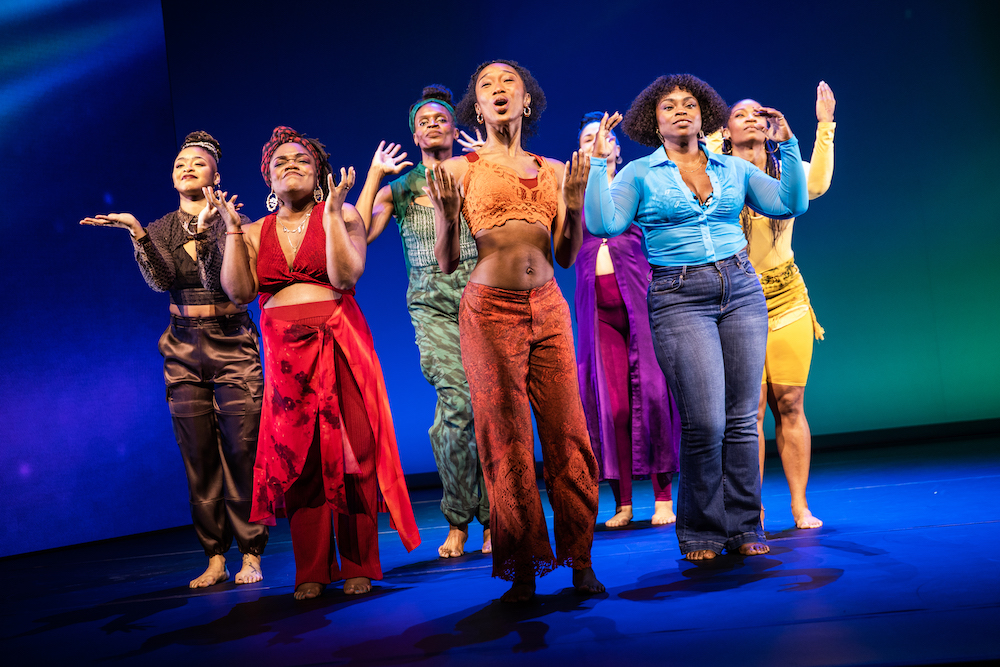
Kaplan: Do you see the women in the play as strong or vulnerable? As victimized or in control? Or maybe some combination?
Brown: I think it’s all that. We are all humans. You hear Black women speaking and being unapologetic about it. We need to continue to have the ability to push, be bolder, be brave. To me that has always been a part of the fabric of who Black women are.
Kaplan: You’re the first Black woman to direct and choreograph a play on Broadway in more than 60 years. What sense of responsibility did that impose on you?
Brown: When you talk about something that hasn’t happened in over 65 years, you automatically know it’s not just about you! I know many Black women directors and choreographers. It’s important for me to continue to uplift and honor them. Hopefully it also makes space for the young Black girls coming after to see these possibilities exist.
Kaplan: You’ve been a Tony nominee, a Guggenheim fellow, receiving many awards and adulation. You’ve choreographed shows for stage and TV. Did you face big obstacles or did it feel like a smooth course?
Brown: If you look at my resume, it looks like all accolades, but I’ve also had to climb. We don’t list on our resumes all the times we’ve fallen. That’s just not how society works. But my greater list is all the times I’ve fallen or been pushed down and had to get back up. I graduated college in 2001 so I’ve been working more than twenty years. I’ve had to climb and persevere and that climb really is the focus for me.
We can connect as a sisterhood and create safe spaces to share our most devastating stories alongside our most joyful stories too. It’s not one feeling—it’s love and pain and joy and sadness.
Camille Brown
Kaplan: Where does the resilience come from?
Brown: My friends and family are my support system. My mom always says what is for you is for you. Meaning if you don’t get something you really want, believe something else is coming that is going to be exactly right. You’ve been preparing, you’re ready and it’s going to be perfectly fit for you.
Kaplan: You work in many venues, including Broadway and the Metropolitan Opera, that typically attract white audiences. How does that change what you present on stage?
Brown: I always believe that the more you tap into the specificity of who you are, the more universal things become. These are human experiences and we are all human beings. When you come to things as you are, when you’re coming from a place of truth, you can honestly reach people.
Kaplan: You have a very distinct dance style. How do you describe it?
Brown: I describe it as Camille! I’ve been influenced by many different ways of moving, from ballet to African to hip hop to jazz. I throw it all into a pot and what comes out is a jambalaya, a stew. I throw in my creative identity too, asking: Who am I as a person? What are my life experiences? My obligation is to make sure I’m always speaking from a place of truth.
This field felt very male-dominated. But I was able to connect with other Black female choreographers and seeing reflections of yourself in the world is so important.
Camille Brown
Kaplan: When did you start dancing and when did you realize this is what you wanted for your life?
Brown: I started dance class at 4 years old, but I didn’t know it was something I could do professionally until I went to LaGuardia High School and the Alvin Ailey dance company would visit. I was like, wow, you can, you can dance and travel the world while getting paid for it!
Once I decided to pursue choreography, I realized most of my teachers and the people encouraging me were all men. I didn’t know if it was really possible for me, as a Black woman, to have a successful career. This field felt very male-dominated. But I was able to connect with other Black female choreographers and seeing reflections of yourself in the world is so important.
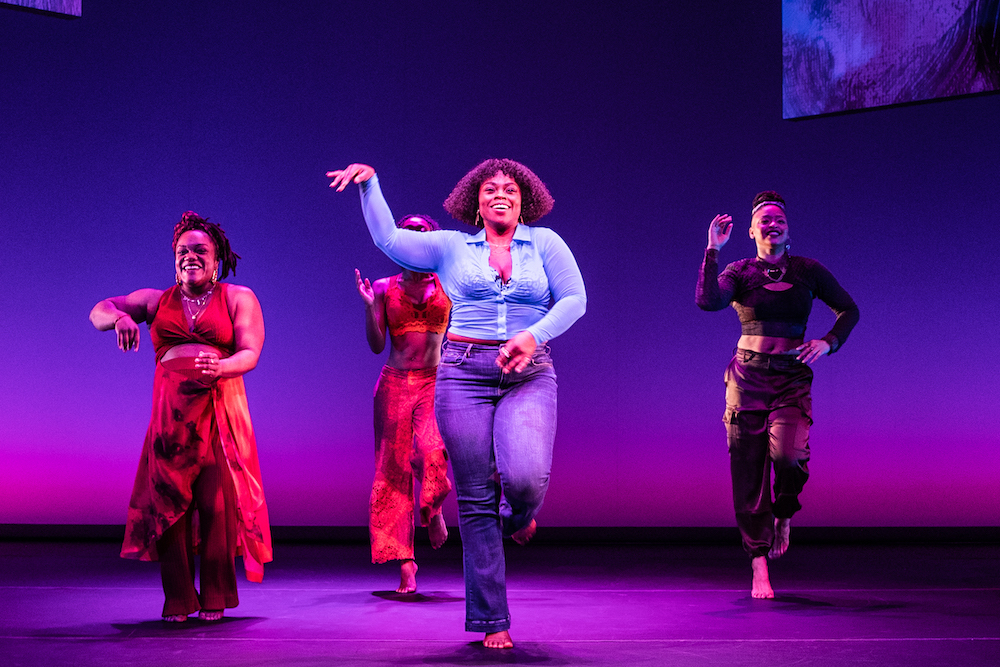
Kaplan: Tell me how dance and movement can empower girls with a sense of possibility—and how that worked for you.
Brown: I was always shy and didn’t participate in class because I was so nervous about saying the wrong thing. I was teased because my voice was small. Movement gave me the opportunity to express myself. Raising your hand and answering every question isn’t everybody’s power. I think it’s so important as we grow and as we continue to create our identities to know that there are different entry points. Movement is just another example of how Black girls and all girls can use their power and find their creative identity.
Kaplan: Your small voice has grown very strong. Thank you for all you do.
Up next:




